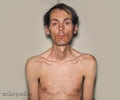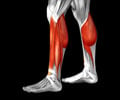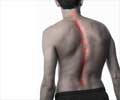Diagnosis
1. Clinical examination
Clinical examination of a male child by the
2. Creatinine Phosphokinase
Assay
As the muscle cells die, the affected cells release the
3. Electromyography
An examination that tests the electrical activity of the muscle. In
4. Muscle Biopsy
A test in which a small section of the affected muscle is examined for presence of minute changes under the microscope.
5. Dystrophin Assay
As patients with DMD have defective dystrophin gene, there is impairment in the production of the dystrophin protein. There is usually a complete deficiency of dystrophin in 99% of the patients with DMD. This assay is also used to distinguish DMD from other forms of muscular dystrophy. This form of diagnostic tool yields accurate results and can therefore be used to establish the diagnosis.










